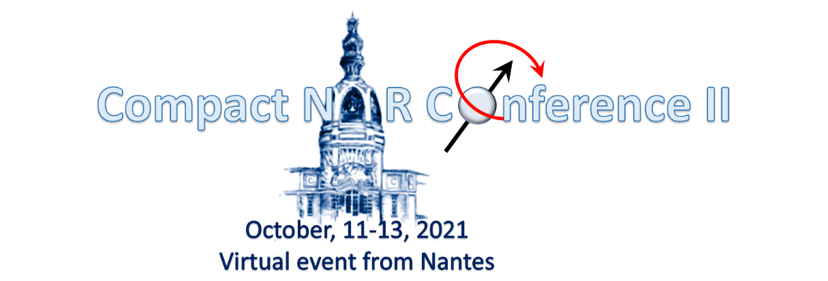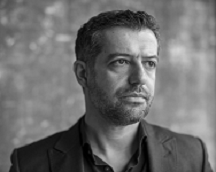|
|
|
Invited speakersPr. Kate Kemsley Professor at Head of Core Science Resources, Quadram Institute Bioscience (UK) She graduated in physics and worked as a patent examiner for several years before moving into academia at the UK’s Institute of Food Research. Her early research career was in applied spectroscopy and sensor design; subsequently, She specialised in computational statistics and chemometrics, applying these approaches to wide ranging data types. In recent years, she has been interested in fast screening methods for assessing food composition and authenticity, with a particular focus on the use of benchtop NMR. Pr. Leroy Cronin Professor at the University of Glasgow (UK) Leroy (Lee) Cronin managed to somehow convince the queen of England to allow him to become the Regius Professor of Chemistry in Glasgow (he joined Glasgow as a lecturer and climbed up to this ‘chair’). Since the age of 9 Lee has wanted to explore science using electronics to control matter but was surprised to make it to university as he was deemed to be of sub normal intelligence when he was 12. His research spans many disciplines and has four main aims: the construction of an artificial life form; the digitization of chemistry; the use of artificial intelligence in chemistry including the construction of ‘wet’ chemical computers; the exploration of complexity and information in chemistry. His group is organised and assembled transparently around ideas, avoids hierarchy, and aims to mentor researchers using a problem-based approach. Nothing is impossible until it is tried. He thinks most people are being too boring because they fear being wrong and hopes to be a role model at convincing people to put being interesting ahead of being right in when it comes to fundamental science.
Dr. Maja Musse
Maja Musse received the Ph.D. degree in biophysics from University Louis Pasteur, Strasbourg, France, in 2000. She is currently a Scientist at research unit OPAALE, NMR/MRI group, INRAE Research Institute. Her research focuses on the development and application of MRI and TD-NMR methods for studying structure, composition and water dynamics of plants and food products at multiple length scales.
Dr. John Blanchard Associate Director of NMR Applications at Nvision Imaging Technologies GmbH (Germany) 2006-2010:BS Chemistry, BS Physics, Arizona State University. Tempe, AZ, USA.
2010-2014: PhD Chemistry, UC Berkeley. Berkeley, CA, USA
2015-2020: Helmholtz Postdoctoral Fellow, Helmholtz-Institut Mainz, Helmholtzzentrum für Schwerionenforschung. Mainz, Germany
2020- current:Associate Director of NMR Applications, NVision Imaging Technologies GmbH
Dr. Meghan Halse Lecturer in Chemistry at the University of York (UK) She received her PhD in Physics in 2010 from Victoria University of Wellington, New Zealand followed by post-doctoral work at the Centre for very high field NMR (CRMN) in Lyon, France. Her research focuses on the development of novel NMR and MRI methods and applications using hyperpolarisation, with a particular focus on the development of low-field and portable NMR solutions with applications outside of the traditional laboratory environment.
Pr. Philippe Wilson Professor of One Health at the Nottingham Trent University (UK) Philippe studies for his Masters and PhD in Chemistry at the University of Bath under the supervision of Prof Ian H Williams, before moving on to a tenured Academic Fellowship at De Montfort University in Leicester. In 2020 he was appointed to a Personal Chair in One Health at Nottingham Trent University, bridging the gap between veterinary and human medicine through NTU’s Medical Technologies Innovation Facility. His group consists of two Postdoctoral Fellows and eight PhD students. They work on addressing problems spanning the One Health space from core analytical chemistry in metabolic profiling with portable NMR, through to genomic characterisation technologies using AI and ML systems for livestock. Their work is disease-agnostic, developing analytical and computational tools for specific disease case studies which can be applied more unilaterally.
Pr. Alina Adams Professor at RWTH Aachen University (Germany) Alina Adams studied physics at Babes-Bolyai University in Cluj-Napoca, Romania. She received her PhD and Habilitation in the field of NMR at RWTH Aachen University under the supervision of Prof. B. Blümich. Currently she holds an interim Professor position at RWTH Aachen University. Her expertise is in the field of NMR methodology, solid-state NMR, low-field NMR, and material science.
Pr. Dimitrios Sakellariou
Professor of Magnetic Resonance at the KU Leuven (Belgium) He is responsible for teaching magnetic resonance and developing new NMR and MRI concepts and applications in catalysis, chemical / bioscience engineering and medicine. Prior to joining KU Leuven he worked at the CEA Saclay for 13 years, where he developed portable and compact NMR sensors.
Dr Maria Victoria Silva Elipe Ph.D., Sr. Principal Scientist at Amgen, Inc (USA) She is the NMR Leader at the Attribute Sciences department supporting drug development from early clinical to commercial for small molecules and hybrid modalities. Her work focuses on low and high field NMR for structure elucidation, reaction monitoring, quantitation, and TD-NMR applications. She has over 20 years of experience in the pharmaceutical industry with her Ph.D. in Natural Products Chemistry from the University of Malaga, Spain.
Pr. Ville-Veikko Telkki Professor at the University of Oulu (Finland) Ville-Veikko Telkki is professor in NMR spectroscopy at the University of Oulu, Finland. His research focuses on development and application of advanced NMR methods for the characterization of structure and properties of materials. The materials involve aerosols, extracellular vesicles, sustainable cements, porous adsorbents, wood, microfluidic devices etc. The methods include ultrafast Laplace NMR, remote detection NMR and MRI, NMR cryoporometry, xenon NMR and hyperpolarization techniques based on spin exchange optical pumping and parahydrogen induced polarization. In 2018, Telkki received European Research Council Consolidator Grant of 2.6 M€ for the Ultrafast Laplace NMR.
Pr. Dr. Gisela Guthausen Professor at Karlsruhe Institute of Technology (Germany)
Prof. Dr. Gisela Guthausen studied Physics in Stuttgart, Germany. Solid state NMR on organic conductors was the topic of diploma and doctoral thesis with Prof. Mehring. As postdoc she jointed the NMR-MOUSE team of Prof. Blümich at RWTH Aachen. Stays at University Karlsruhe and Bruker in the application development followed. Since 2007 she works at KIT in the development of NMR techniques to answer chemical engineering questions.
Dr. Guilhem Pagès Ph.D. French National Institute for Agriculture, Food, and Environment (France) Guilhem Pagés started his research career by using PFG NMR applied to chemical or biochemical systems. His PhD was awarded in 2006 in Marseille under the supervision of Prof. Caldarelli. Then, he had several post doctoral positions in this field with Prof. Kuchel in Sydney, Prof. Furó in Stockholm and Prof. Malet-Martino in Toulouse. He then moved to MRI research in Singapore before being recruited in the INRAe MRI facility AgroResonance. There, he has developed a research program on metabolic MRI and in situ low field MRI. His research project on this latter has been funded by the ANR. |
| Online user: 3 | Privacy |

|


